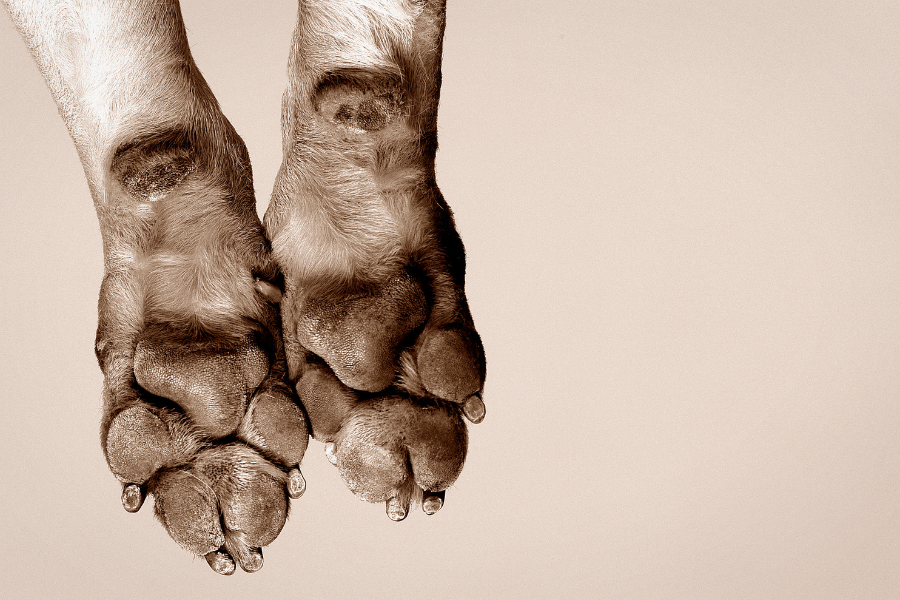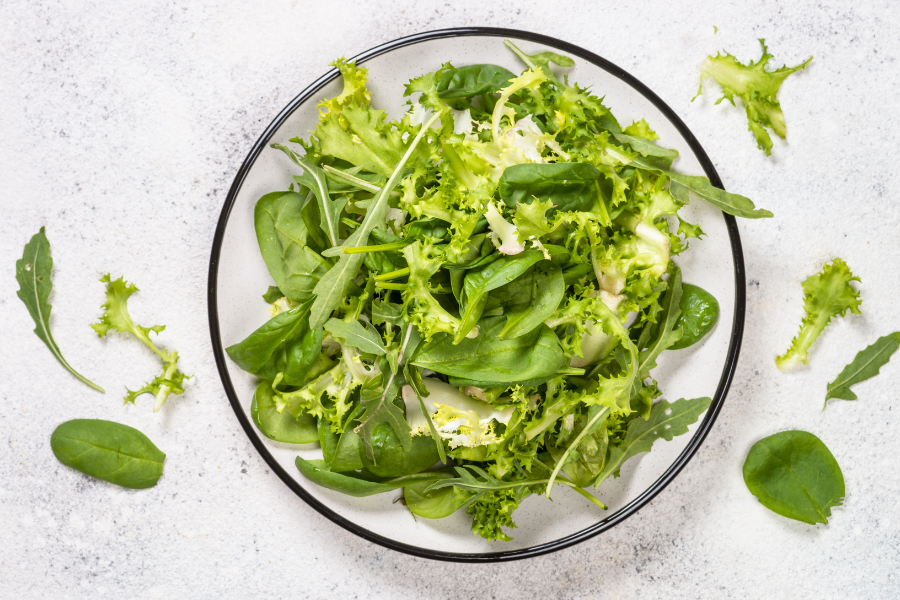Introduction to Happy Paws
Every dog owner knows that a happy dog equals a happy home. Less obvious, perhaps, is the fact that one of the keys to a canine's contentment lies in his paws. Yes, those cute little pads are doing more than just leaving tracks in the mud. They literally support your furry friend in all of his or her endeavors. Whether it's a romp in the park or a quick stroll around the block, your dog puts a lot of stress and strain on those paws (and yes, paws are in fact considered feet). This article will cover all that you need to know about keeping those paws healthy and why it is so important. We'll take you through what healthy paws look like, common issues, and some tips for preventative care, so your dog can keep on dancing and prancing for years to come.
Signs of Healthy Dog Paws
Texture
The paws of a healthy dog should feel a tad rough. We are not talking like as dry as the Sahara desert here, but there is no problem with dog paws having some roughness to the. The natural roughness in the paws acts as an advantage, providing extra grip so your pooch won't slip and fall. If your pup's paws are too smooth, this may be a signal that they're not getting enough exercise — or something else that is worth checking out. So again, some roughness is good, but watch out for excessive roughness, as pads can crack or peel. A proper balance has to be maintained for healthy pads.
Moisture
While you're down there, checking out paw texture, you might as well also take a quick second and feel for moisture. Healthy paws should have some moisture, but not too much. It's a Goldilocks thing: not too dry, not too wet, but just right. For those of you not familiar, in the story of Goldilocks, Goldilocks has a preference for porridge that is not too cold, and not too hot, but is just the right temperature - the takeaway is that it is about finding balance! If you feel anything out of the ordinary, such as discoloration or an abnormal odor, that may be your signal that trouble is brewing beneath the surface.
Color
Just like the complexion of your skin can tell you a lot about your health, the color of a dog's paws can tell you a lot about the state of their paw health. While paw color can vary from breed to breed, and be age-dependent, pads typically range from pink to brown in color. The key here is to take note if your dog's pads have been one color their whole lives, but then change in color all of a sudden, this may be a red flag as it could be indicative of an infection, or at least some irritation.
Common Dog Paw Issues & How to Spot Unhealthy Dog Paws
Cuts and Abrasions
You know it and I know it - dogs are natural explorers. We simply can't prevent them from doing adventurous things. Unfortunately, these adventures can end in some booboos from time to time. Sh** happens. Typically, these booboos are nothing to panic about. But (capital B here).... if they get a cut or abrasion on their paws, it is important to keep the cut clean to prevent infection! You can easily clean your dog's paws with warm soap and water,
Allergies
Your dog is like you in more ways than you probably think. Allergies are a great example - yup, dogs can have 'em too! And dogs, just like us humans, can react to a lot of the same allergens (crazy, right!?). These environmental allergens could be anything from something in their diet, to pollen, to even the material they are sleeping on. One symptom of allergies in a dog is itchiness, and this can result in them biting, licking and scratching their skin and paws excessively (which, if continues, can lead to open sores - yikes). It is recommended that you consult your vet ASAP if you think your dog is having allergies. Your vet will help you identify potential allergies and treat them.
Infections
Infection of dog paws may be fungal, bacterial, or caused by yeast (yeast is technically a type of fungi). These infections are most of the time not easy to diagnose alone. General symptoms will involve reddening, swelling, and a bad smell. The best way to prevent the development of infection is to keep your dog's paws clean and dry. Regular checking and prompt treatment (with your vet's help) at the first sign of trouble may make all the difference.
Dry/Cracked Pads
These are fairly common, especially for a dog that has been doing a ton of walking or running on coarse surfaces or in extreme weather conditions. Such conditions can be painful for your dog and may give, in turn cause discomfort while walking. This is easily treated with the application of moistening balm, which prevents the drying of your doggo's pads. This should be obvious, but one shouldn't use human lotions or creams, since those can contain ingredients that can be harmful to pets.
Tips for Preventing Dog Paw Issues
Regular Paw Checks
Just a little TLC (not the girl group) for your dog's paws is all it takes to keep those footsies looking and feeling fabulous. On a weekly basis, make a habit of checking all four paws closely, keeping an eye out for swilling, color changes, cuts or anything else out of the ordinary. You can also take notes in a dated journal to keep you on track! When you make this a habit, your dog will also get used to it, and they will probably start to like it - especially if you use positive reinforcement techniques alongside the paw inspections!
Proper Nail Trimming
Long nails aren’t just annoying; they can affect your dog’s gait and cause paw issues over time. Ensure your dog's nails are trimmed regularly, but be careful not to cut too close to the quick. If you're unsure or nervous about trimming them yourself, a professional groomer or vet can help. Short and sweet nails make for happy feet!
Moisturizing with Safe Products
Keeping those paws hydrated is essential, but not all products are created equal. Look for pet-safe balms or oils specifically designed for dogs. Products like coconut oil or shea butter can work wonders but always ensure they’re safe for canine use. Apply the moisturizer after walks and baths to keep the pads supple and free from cracks.
Protecting from Extreme Weather and Surfaces
Extreme temperatures can be tough on dog paws. In the summer, hot pavement can burn, while in winter, ice and salt can dry out and irritate the skin. Consider investing in dog boots for harsh weather conditions or limit walks during extreme temperatures. Wiping your dog's paws after walks can also remove harmful substances and keep them clean.
First Aid for Minor Paw Injuries at Home
Clean Gently
For minor cuts and abrasions, start by gently cleaning the area with warm water and a mild soap. Be careful to remove any debris like small stones or dirt without causing more irritation. Pat the paw dry with a clean towel, making sure no moisture is left behind, as dampness can lead to infection.
Apply Antiseptic
Once the area is clean, apply a pet-safe antiseptic to prevent infection. These can usually be found at your local pet store or pharmacy. Avoid using hydrogen peroxide or alcohol, as these can be too harsh and sting the sensitive skin on your dog's pads.
Bandage for Protection
If the injury is in a place where it might get dirty or be continuously irritated, a small bandage can help protect it while it heals. Make sure the bandage is snug but not too tight, allowing for circulation. Keeping your dog distracted with a treat or toy can prevent them from chewing it off.
When to Seek Veterinary Care for Dog Paw Issues
Persistent Problems
If you notice a paw issue that isn’t improving with home treatment or seems to be getting worse, it’s time to call the vet. Persistent problems like ongoing swelling, redness, or discharge should be assessed professionally. Early diagnosis can prevent more severe issues down the line.
Severe Injuries
For serious injuries such as deep cuts, broken nails, or burns, seeking immediate veterinary care is crucial. Even if something seems minor, if your dog is in visible distress or pain, don’t hesitate to get them checked out. Vets can provide pain relief and proper wound care to speed up recovery.
Suspected Infections
Infections can escalate quickly, so if you suspect one, don’t delay in contacting your veterinarian. Signs like pus, a bad odor, or significant swelling need professional evaluation. Your vet will likely prescribe antibiotics or other treatments to clear the infection effectively.
Conclusion to Proactive Paw Care
Healthy paws are an essential part of your dog's general well-being and quality of life. Keeping a watchful eye and taking the necessary steps to avoid potential paw problems is key to success. Just a little care on a regular basis is all it takes to keep your furry companion healthy and doing the things they love to do, whether it be sprinting after squirrels or snuggling up on the couch with you.
References
1) Bajwa J. Canine pododermatitis. Can Vet J. 2016 Sep;57(9):991-3. PMID: 27587895; PMCID: PMC4982575.



